Dealing With Knee Pain From Leg Press
Author:
Unlock your full potential by engaging with our experts and community! Have questions about your fitness journey or looking for expert advice on weightlifting techniques? Don’t hesitate — leave a comment below and Ernesto Mendez will provide a personalized answer and insights to help you reach your goals.
Torokhtiy is reader-supported. Some links are affiliate links, and we may earn a commission at no extra cost to you. See our disclosure page for details.
Are you feeling knee pain from leg press exercises?
Leg presses are a popular compound exercise great for targeting the lower body muscles , such as the glutes and quads. However, it is important to be careful when performing this exercise, as it can put a high amount of unwanted stress in your joints, especially at the knees.
This article will aim to answer all common questions such as what causes knee pain, is leg press bad for knees, how to prevent knee pain after leg press exercises, what are some good exercise alternatives, and more.
Knee pain from leg press exercises can stem from improper technique, overexertion, and underlying medical conditions. If your knees hurt after leg press exercises, consider lowering the weight amount, performing less reps/sets, taking a few days to rest, and if the pain persists, consult a doctor or a physical therapist.
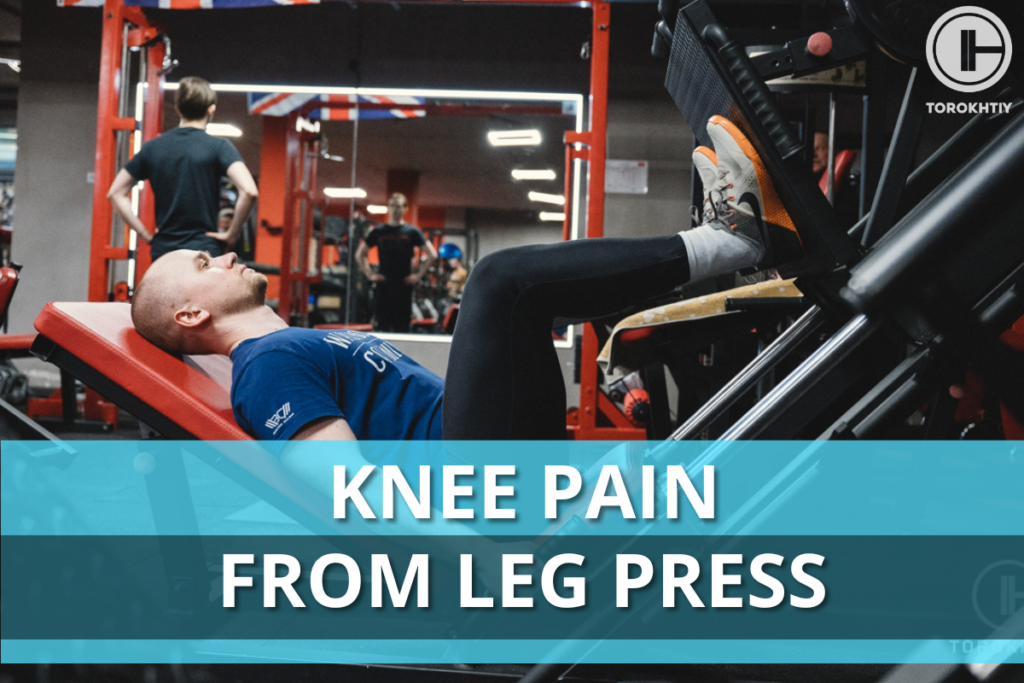
Intro To Knee Pain From Leg Press
Leg presses are a versatile compound exercise that activate multiple muscle groups, such as the quads, calves, glutes, hamstrings, and others. They can be adapted to achieve a variety of fitness goals, such as building strength, toning muscles, and developing explosive power.
Additionally, leg presses offer various health benefits, including reducing the risk of chronic diseases, improving bone density, and strengthening and alleviating pain in your knees.
Leg presses are also an excellent alternative to squats, as they target nearly the same muscle groups and develop similar levels of explosiveness, while putting less overall pressure on the body.
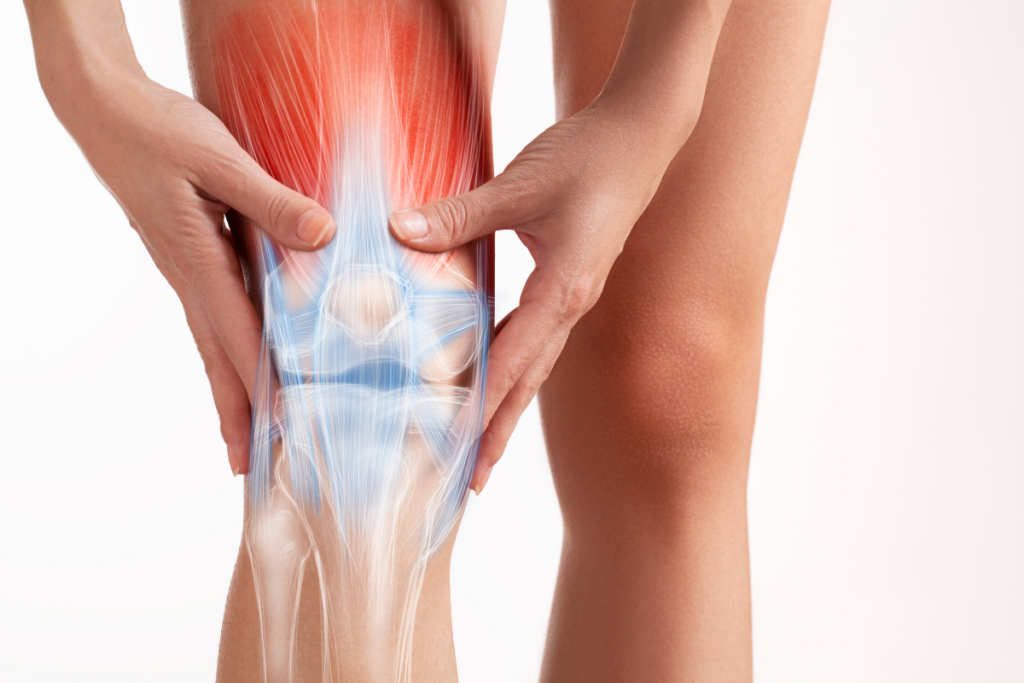
Understanding Knee Pain From Leg Press Causes
1. Improper Technique
Probably the most common reason for exercise-related injuries is not using proper form and technique.
Leg presses may seem like a straightforward exercise – just sit on the machine and push with your legs, right? Wrong. There are clear do’s and don’ts.
First things first, adjust the seat and footplate distance so that you can comfortably complete the range of motion. Your feet should be positioned shoulder-width apart, with your knees in line with your toes. A narrow foot stance will result in greater muscle activation, but it also puts more pressure on the knees.
When assuming the starting position, pay attention to your foot placement. If your knees are above your toes, your feet are too low on the footplate. Likewise, if your toes are above your knee line, your feet are positioned too high. The correct starting position and the lowest point your knees should reach is having your legs bent at approximately 90 degrees.
Research has shown the 90-degree leg press has the highest muscle activation. Additionally, the highest position is having your legs extended without fully flexing, leaving a slight bend in your knees.
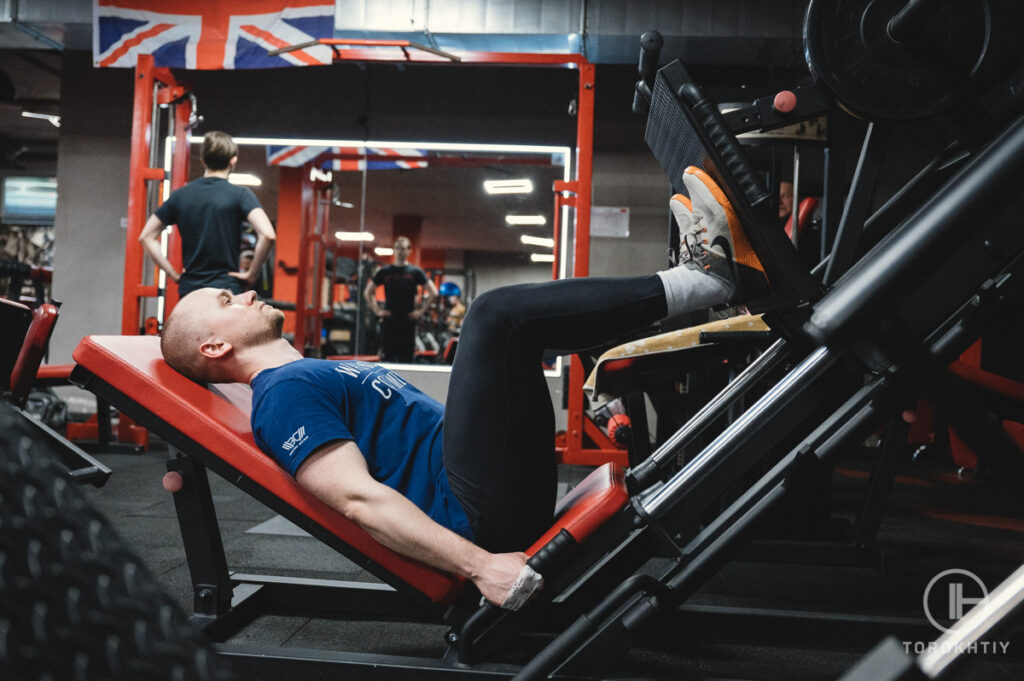
Second, make sure you’re actually seated, with your hips and back fully supported. Otherwise, you risk putting pressure on them, which can make the exercise harder at best, and more dangerous at worst.
If you’re using a horizontal leg press machine, you won’t have to worry about being pressured under the weights, so you can just step off when you’re done. However, if you’re using an angled or vertical leg press machine, you’ll most likely have to manually lock the weights from dropping by using a safety lever or a similar locking mechanism.
Before you start your workout, make sure that mechanism is within your reach. One of the most common causes of leg press injuries I see at the gym is athletes forgetting about this and, instead of asking for assistance, trying to either push off the weight and overstressing the knees or having their feet slip off the footplate while trying to adjust their upper body to reach the lever.
2. Overworking
One of the most overlooked reasons for why your knees hurt after leg press is simply overworking.
Doing too many sets or repetitions of the leg press exercise without giving the knees enough time to rest and recover can lead to overburdening them and causing injury.
The train of thought around working out usually goes something like this: exercise is good, therefore more exercise is even better, thus a higher number of repetitions and sets is even better.
But believe it or not, there is such a thing as too much exercise, and knowing how much to exercise and when to stop is crucial to avoiding injuries.
How many sets and reps and how much weight you should do depends on your athletic level, but generally, a good rule to follow is 3-5 sets of 5-6 repetitions at maximum weight or 8-12 repetitions at 70% of your maximum.
If you’re very experienced, you could pull off up to 15, but anything over that is overkill. I’ve seen people at the gym do as much as 20 per rep and wonder why their knees hurt after.
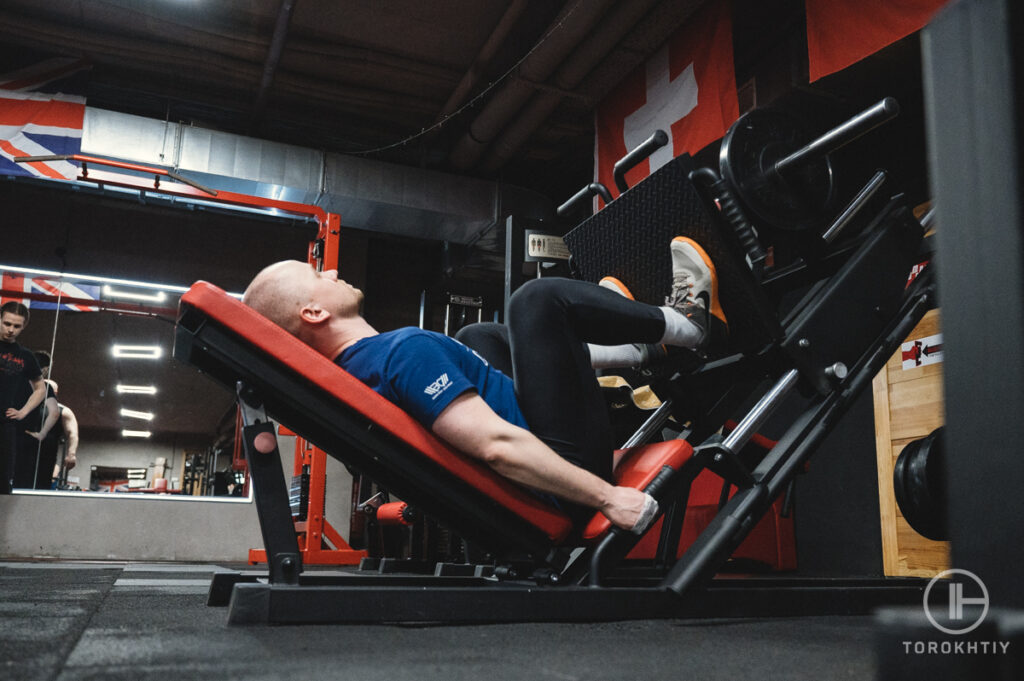
3. Pre-Existing Medical Conditions
If you feel knee pain after leg press exercises, it may be due to a pre-existing medical condition of which you may or may not be aware.
Some of the most common knee issues include different types of arthritis, ligament tears, kneecap fractures, and others. These can result from various factors, including genetics, injury, aging, and more.
If your knees hurt after leg press exercises and you’re aware of having potential pre-existing medical conditions, you should consult your doctor to determine if this exercise is safe for you.
Unless you’re a doctor or a physical therapy specialist, you probably shouldn’t try to diagnose your own knee pain. Instead, seek advice from a medical professional. This is important not only for receiving proper treatment for your knee but also for identifying and hopefully preventing any long-term medical problems.
How To Prevent Knee Pain From Leg Press?
1. Pay Attention To Your Form
The most repeated exercise tip of all time by coaches, and yet we wouldn’t have to repeat it if it didn’t prove relevant time and time again. The best thing you can do to avoid leg press knee pain is to make sure you’re doing it properly.
As a reminder:
- The starting position and cutoff point for each rep is approximately 90 degrees.
- Your feet should be placed on the footplate so that your knees are aligned with your toes.
- The highest point your legs should reach is just before full extension, with a slight bend kept in your knees.

2. Take Proper Resting Periods
Taking the proper time to rest between exercise sessions is one of the most important ways to prevent overworking and causing pain in your body. Leg presses put a high level of stress on the lower body, so it’s crucial to avoid doing them consecutively.
If you’re a beginner-level athlete, you should do them once a week, maximum twice if 3-4 days have passed. Intermediate athletes can get away with doing them 2-3 times a week, assuming there was at least one day of rest in between.
Advanced and professional athletes can do them every other day, but it’s only recommended if necessary for their athletic performance.
For example, performing leg presses once a week is proven to be equally as good as twice a week when tested on female athletes. There’s a reason why many professionals and coaches separate their workouts into specific days for specific body parts. In this scenario, you’ll be doing leg presses on your leg day, and that’s it for the week.
Treatment Of Knee Pain From Leg Press
If you experience knee pain from doing leg presses, try modifying the exercise by lowering the weight amount, doing less repetitions, or both. However, If the pain and discomfort persists post exercise, it is highly recommended that you consult a medical professional to determine the cause and receive appropriate treatment.
In terms of home remedies, elevating your leg to improve blood flow is a good starting point. If your knees are swollen, you can apply ice for 10-15 minutes several times throughout the day to help reduce inflammation and ease pain.
Of course, it should go without saying that proper rest and avoiding exercise for a few days can go a long way in allowing your body to heal. In the meantime, you may want to consider some of the following leg press alternatives.
4 Alternative Exercises To Leg Press
1. Bodyweight Squats
Bodyweight squats are a low-impact exercise for building lower body strength and muscle that don’t place stress on your knees. The exercise works just like a normal squat, except instead of using weight to create resistance, we use our natural weight against gravity.
To perform a bodyweight squat, stand with your feet shoulder-width apart and squat down as low as you can while keeping your knees in line with your toes.
2. Step-ups
Step-ups are another low-impact bodyweight exercise you can do at the gym or at home. They’re usually done with a plyometric box. However, if you don’t have access to one, you can simply use any sturdy elevated surface you can step onto instead.

As the name suggests, to perform a step-up, simply walk up to the elevated surface, step on it with one leg after the other, then step down. A typical step-up drill consists of 4-5 sets of 16-20 steps (8-10 for each leg). They’re also excellent if you need to exercise one leg more than the other, as you can simply focus on doing more reps with it.
3. Bulgarian Split Squats
Bulgarian split squats strengthen and tone the muscles in your legs, including your quads, glutes, and hamstrings. They also improve your balance and stability and help to straighten misaligned knees.
To perform a Bulgarian split squat, you’ll need an elevated surface to place your foot on. At well-equipped gyms, you can find single-leg squat rollers, which are ideal for this exercise. However, if you don’t have access to one, using a weight bench or a stack of weight plates works fine too.
Begin by facing away from the elevated surface and placing one foot on it, touching down with your shin and pointing your knee downwards. Take a half or full step forward, depending on your height, to assume a lunge position with your front leg aligned with your upper body.
To execute the exercise, move your body up and down by bending at the knees, touching the floor with your back knee at the lowest point.
4. Incline Walking
Finally, simply walking with an incline – either somewhere uphill or on an adjustable treadmill – is an excellent alternative to the leg press.
Inclined walks target nearly the same muscle groups as leg presses, including glutes, quads, hams, and calves.
It will take more of your time to reach the same strength-building results, but inclined walking is also a highly beneficial cardio exercise that also helps with weight loss and general fitness.
Knee Sleeves For Preventing Injuries
Being apparently the best option for squatting with heavy weights, these knee sleeves are an exemplary garment for all-level athletes and gym attendees, and everyone who suffers from pain during workouts.
Thanks to 7mm thickness and high-quality durable SCR neoprene material, these sleeves will serve you long and bring comfort and safety while working out with heavy weights. Their anatomical design, double silicone gel wave, and double stitching vouch for great support for your joints, kneecaps, and surrounding muscles.
These sleeves will cover your entire knee, are very comfortable in fit, so you can wear them a whole workout with no problem. They definitely improve results.
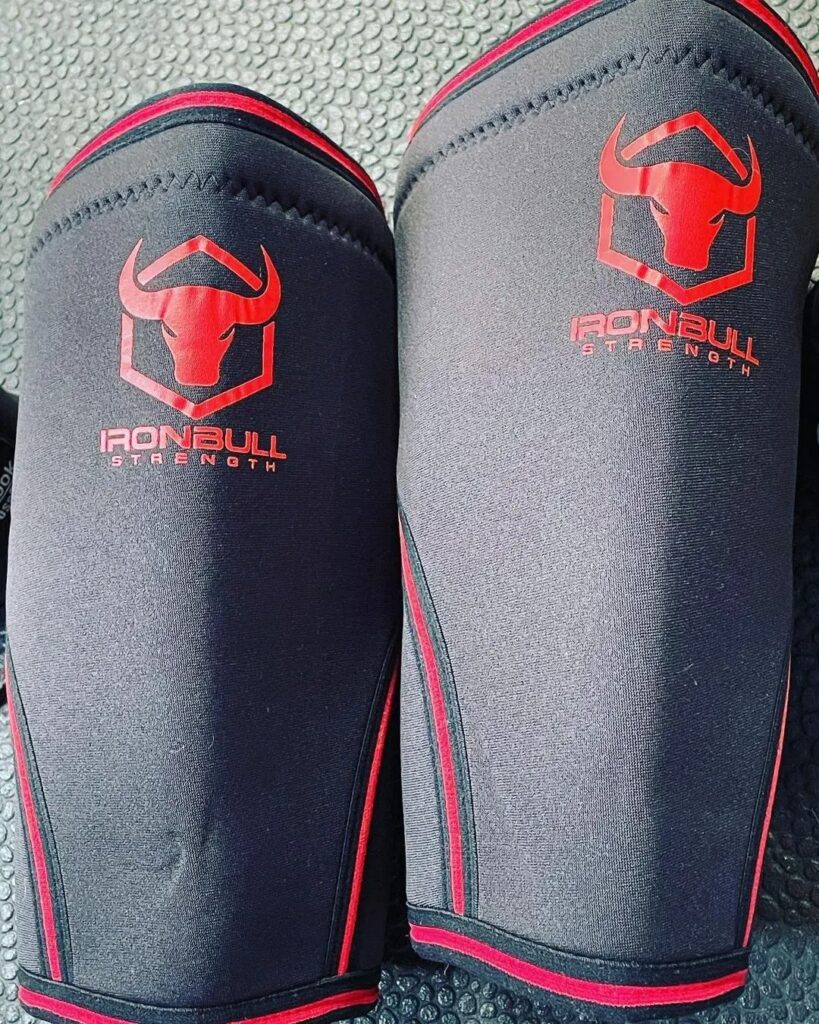
They are thicker and more resilient than other sleeves and allow a better range of motion even when your knees are overtrained. Your joints will stay warm during intensive lifting sessions, by facilitating blood circulation, boosting power, and lifting confidence.
Our verdict is that the IronBull knee sleeves are worth their price absolutely. That will be your best investment for your knees.
FAQ
Why Do My Knees Hurt After Leg Press?
There are several reasons why you may experience knee pain after leg press exercises, including improper technique, too much weight, overexercising, and pre-existing health conditions, to name a few.
If you experience knee pain during leg presses, try correcting your form, reducing the number of sets and reps, and lowering the weight. If this doesn’t seem to solve the problem, consult a medical professional.
Is Leg Press Bad For Knees?
Leg presses aren’t inherently bad on the knees so long as you’re doing them properly. In fact, leg presses can strengthen your joints, including the knees, if properly utilized. For example, research has shown that even people with knee osteoarthritis can use leg presses to improve knee extensor muscle strength and physical function, as well as a reduce the feeling of pain.
Conclusion
Leg presses are a popular and effective exercise for building lower-body strength, toning muscles, developing explosiveness, and more. However, it’s important to be cautious as leg press knee pain can be a potential side effect.
It’s crucial to pay attention to your body and not ignore any signs of discomfort. If you experience knee pain from leg press exercises, consider reducing the weight or taking a break. If the pain persists, it’s recommended to seek advice from a medical professional.
Do you include leg presses in your workout routine? What tips do you have for avoiding knee pain during leg presses? Share your experience in the comments and don’t forget to follow my social media pages for more valuable fitness content.
Also read:
- Why Do My Knees Hurt When I Squat
- Knee Pain From Lunges
- Knee Pain After Working Out
- Is Jump Rope Bad for Knees
- Pain in Knee When Lunging
- Knee Pain From Elliptical
- 5mm vs 7mm Knee Sleeves
References:
- How to Do the Leg Press // VeryWellFit: https://www.verywellfit.com/how-to-do-the-leg-press-3498610
- What is the best strength exercise for knee pain? // Sports Injury Physio: https://www.sports-injury-physio.com/post/what-is-the-best-strength-exercise-for-knee-pain
- Effects of technique variations on knee biomechanics during the squat and leg press // NCBI: https://pubmed.ncbi.nlm.nih.gov/11528346/
- Analysis of Muscle Activation During Different Leg Press Exercises at Submaximum Effort Levels: Stretches, exercises, and more // Journals: https://journals.lww.com/nsca-jscr/fulltext/2008/07000/analysis_of_muscle_activation_during_different_leg.5.aspx
- A comparison of once versus twice per week training on leg press strength in women // TheKeep: https://thekeep.eiu.edu/kss_fac/16/
- Immediate effects of leg-press exercises in individuals with knee osteoarthritis // Imedpub: https://www.imedpub.com/articles/immediate-effects-of-legpress-exercises-in–individuals-with-knee-osteoarthritis.php?aid=47928
- Photos made by Torokhtiy Media Team; photo by Filip_Krstic, Canva.
Why Trust Us?
With over 20 years in Olympic weightlifting, strength training, nutrition coaching, and general fitness our team does its best to provide the audience with ultimate support and meet the needs and requirements of advanced athletes and professional lifters, as well as people who strive to open new opportunities and develop their physical capabilities with us.
By trusting the recommendations of our certified experts in coaching, nutrition, and sports training programming, as well as scientific consultants, and physiotherapists, we provide you with thorough, well-considered, and scientifically proven content. All the information given in the articles concerning workout programming, separate exercises, and athletic performance, in general, is based on verified data.
The product testing process is described in more detail here.
Author: Ernesto Mendez
Orthopedic Clinical Specialist
Best Results: Snatch – 208 kg,
C&J – 240 kg
Dr. Ernesto Mendez is a licensed physical therapist, a board Orthopedic Clinical Specialist (OCS) and founder of Movement 4 Wellness Physical Therapy, LLC. He earned his degree from Thomas Jefferson University. He is also an Olympic weightlifting coach (USAW L1) and Functional Fitness Level 1 Trainer. His experience includes the areas of pain management, movement analysis, injury recovery, surgical rehab, corrective exercise, and athletic, military, and occupational performance. Dr Mendez is passionate about Olympic weightlifting and fitness. Ernesto Mendez is responsible for designing multiple training programs, writing blog articles, posting daily weightlifting content, doing live weightlifting and mobility seminars.



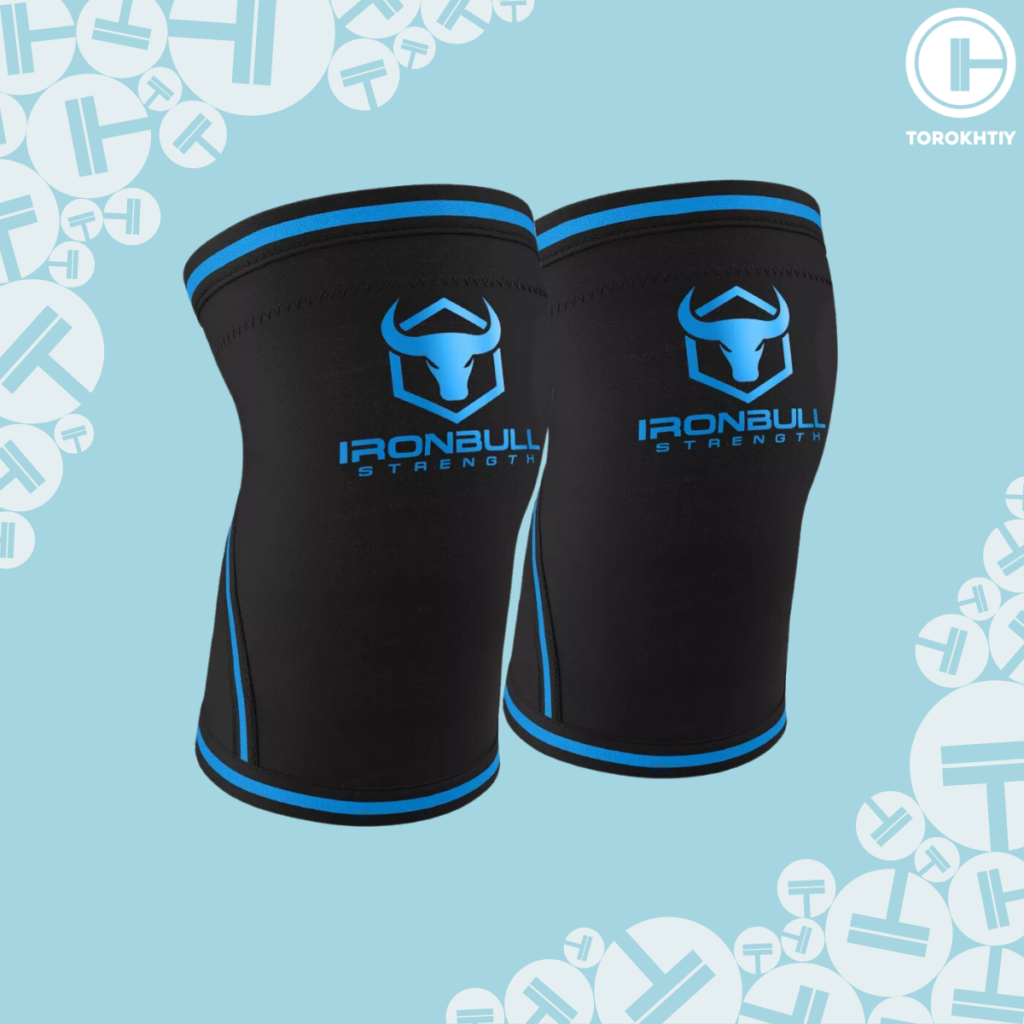
Still have questions after reading our article? Unlock your full potential by engaging with our experts and community! Don’t hesitate — leave a comment below and Ernesto Mendez will provide a personalized answer and insights to help you reach your goals.